Scrappy underpants? I’m putting mine in Landfill.
Our stained undercrackers are polluting Ghana's beaches
Ete sen from Ghana’s bustling capital city, Accra. I’m here for 10 days, working with my friends at The Or Foundation — a data and research centre and non-profit working at the intersection of clothing and environmental justice in service of the local secondhand community.
Big Fashion runs on oversupply. Current estimates suggest that up to 150 billion garments are being produced annually — extortionate when you consider that the global population is 7 billion, 50% of whom dress in used clothing.
If you’re UK-based, it’s extremely likely that you’ve donated your unwanted clothes to charity, dropped them into “recycling” boxes at your local supermarket car park, or gained some in-store credit at H&M for using their “take-back” programmes — all with good intentions.
Most of the garments that aren’t quite crisp enough to resell on our own shores enter the global export supply chain. They are graded during a sorting process: the most profitable items will be filtered out via Europe, and the lowest-grade items end up in the Global South — a crisis known as waste colonialism. My friend Nutifafa, a super stylish upcycler working with The Or Foundation to support the Kantamanto community, told me: “Your streets are clean because ours are dirty.”
In Accra, these garments are referred to as obroni wawu, which roughly translates as “dead white man's clothes” — the implication being that someone would have had to die to part with this level of cast-offs.
As fashion gets faster, the volume of clothing entering Ghana and other parts of the Global South has vastly increased. It is easier for the UK’s unwanted clothes to arrive in Ghana than it is for most Ghanaians to obtain a tourist visa to the UK. As brands profit from their model of oversupply, and exporters profit from our cast-offs, the local community here is paying a steep price.
Kantamanto Market is one of the world’s largest secondhand markets. It’s home to 30,000 independent resellers, tailors and upcyclers. Even if you’ve never been here before, your clothes likely have — an estimated 15 million garments enter the market each week. It is an astonishing, inspiring and overwhelming place.
Every effort is made to be resourceful, meet demand and ensure as little as possible goes to waste. There are sellers upcycling old cotton shirts into boxers (I bought myself a pair), dyers refreshing denim, tie-dyers covering stains on 5k charity run t-shirts, and screen printers adding Zara logos to shirts to make them more appealing to locals (which I found uncanny and badass in equal measure).
These clothes arrive in colossal bales in trucks, and many are completely torn, slashed and stained. In desperation, some of the workers say a prayer before opening the bales, knowing they’ll likely be in debt as soon as the wrap is cut.
On New Year’s Day 2025, a catastrophic fire blazed through Kantamanto, destroying about 60% of the market — and with it, many livelihoods. Despite huge losses and fatalities, the community persevered with help from The Or’s emergency fire relief fund, and a small amount from the government. Much of the market has now been upfitted, but the chances of another fire are still extremely high due to poor infrastructure and a temperamental electricity system.
Despite relentless resourcefulness from the Kantamanto community, as much as 40% of garments leave Kantamanto as waste, mostly because the garments are of such low quality — a result of fast fashion’s ever-quickening pace.
Less than 2km from Kantamanto is the ocean. There’s no sanitary landfill or incinerator in Accra, and during the heavy rains, unsold clothing is pushed out through the open gutter system and ends up on the beaches. On Jamestown Beach, local community members over thirty can remember turtles laying eggs on the shore and dolphins out at sea. Now, local fishermen are more likely to catch clothes than fish.
The Or Foundation doesn’t yet know the full extent of the damage to marine life, but during a rocky boat trip out to sea to collect data about ocean health, I was stunned by the amount of plastic that I could see at the surface, flickering in the blazing sunshine.
Back on shore, the sand is covered by a carpet of waste. The Or Foundation conducts weekly beach clean ups in a bid to clear waste and collect data about the most commonly found clothing tags which they publish on social media for us all to see. Their progress is substantial (as are the organisation’s cotton fibre recycling innovation efforts), but this doesn’t turn off Big Fashion’s tap, nor can it control the weather.
Textile scraps intertwine with other forms of waste like plastic and rubber, getting mangled together by water and sand, forming mound-like structures up to six feet tall. These are extremely hard to disentangle and splay out like “tentacles” as long as ten feet.
After the tentacles have been hacked at with axes, they’re put into sacks. During my first cleanup, the community carried 1,167 sacks with an average weight of 33.4kg. In just two hours, they cleared nearly 40 tonnes of waste. They could have doubled that, but it would require a new truck they currently can’t afford. It’s $250k — a substantial cost — but something Nike could certainly afford.
Despite the sense of camaraderie and community, this is tiresome, smelly and dirty work. Many folks are paid by The Or Foundation to participate, but they’d all rather be elsewhere. In a video I made with my friend Freeheart, participants explained how they’d rather be studying, watching a movie, or at the gym.
Amongst the Adidas, Nike, M&S and Tommy Hilfiger branded garments I came across, other items I found on the beach included: a pair of Billabong surf shorts, a dead pufferfish, a toy cat, a COVID test, a rubber insole, a toothbrush without the head, a JBL speaker, plastic food wrappers — and many items of used underwear. To me, this feels particularly violent.
According to The Or’s co-founder Liz Ricketts, it’s not illegal for the UK to export underwear, but it is illegal to import it under Ghanaian law.
There isn’t a Marks & Spencer, Tesco or Sainsbury’s store here, so finding a pair of stained M&S, F&F or Tu panties — that may well have once belonged to me — was confronting. I felt compelled to announce to the other cleanup members: “Another British brand… that’s me. That’s where I’m from.” The power imbalance is evident. Big Fashion’s excess is not this community’s waste to carry, manage, or cope with.
So what do we do with our stained underwear?
When it comes to solving Big Fashion’s violent oversupply, we need systemic change. And we can’t solve systemic issues on the scale I witnessed in Accra through individual impact. Collective action is our first point of call.
TAKE ACTION
Demand brands share their annual production numbers (units, not weight) and publicly endorse The Or Foundation’s Speak Volumes campaign. This campaign is trying to close the production rate data gap (which currently sits at 70 billion). We can’t create policy without data. Once we have transparency from all brands (massive shout-out to the 80+ companies who have already signed on), we can work to create a globally accountable Extended Producer Responsibility (EPR) system — meaning brands would have to pay for the entire life cycle of their garments.
The results would be far-reaching: garment makers wouldn’t have to make so many clothes, the quality would improve, and there would be real investment in recycling infrastructure.
Since my time in Accra, I’ve lost the last remaining scraps of faith I had in so-called “textile recycling” systems in the UK. And I cannot bear the thought of my gross old gussets entering Ghana. Unlike torn t-shirts, which make excellent cleaning rags and cushion fillers, I can’t quite stand the idea of a friend’s head resting on a pillow that I have upcycled, stuffed with my stained undies.
So until we have a globally accountable EPR system, I will be putting my pants in the UK landfill bin. I’ll also be pushing harder than ever for systemic change, and shouting about campaigns helmed by the communities on the frontlines of Big Fashion’s polycrisis.
Big Fashion in its current form is pants — we must demand better.

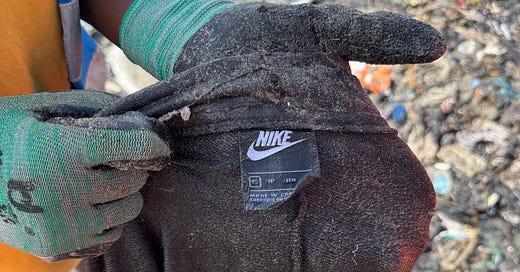


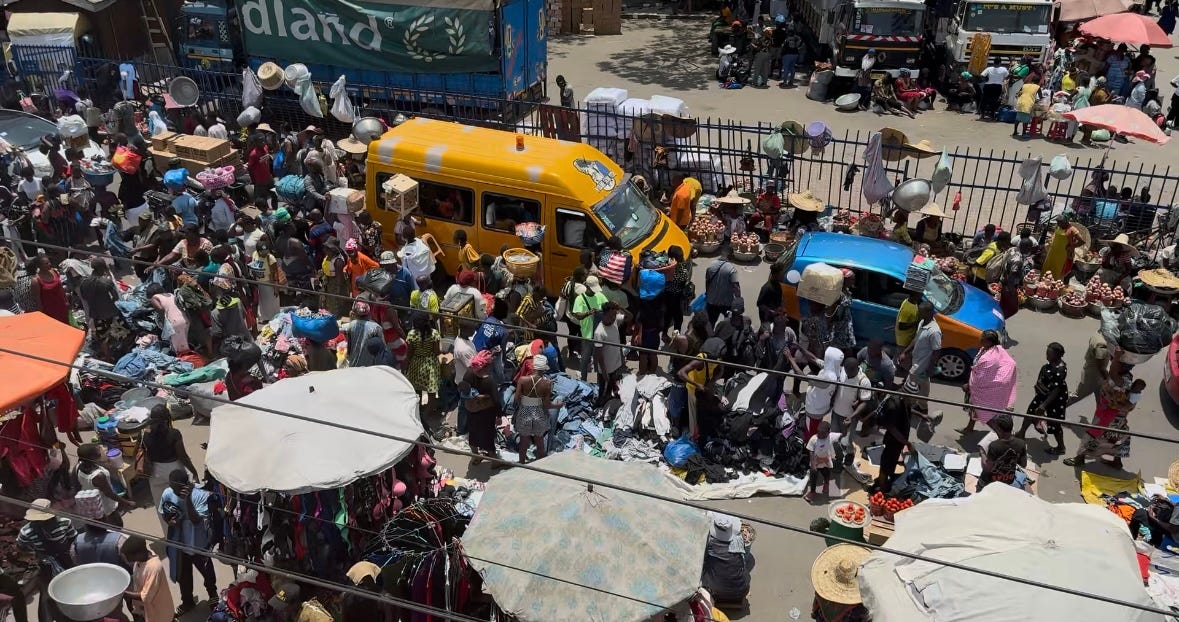
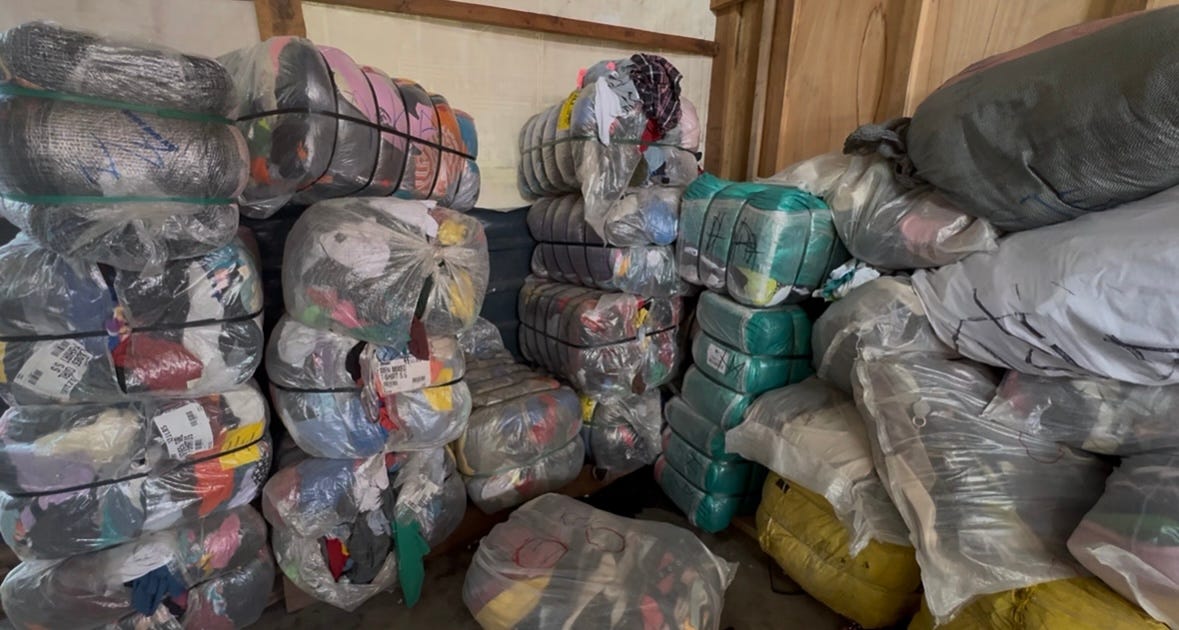
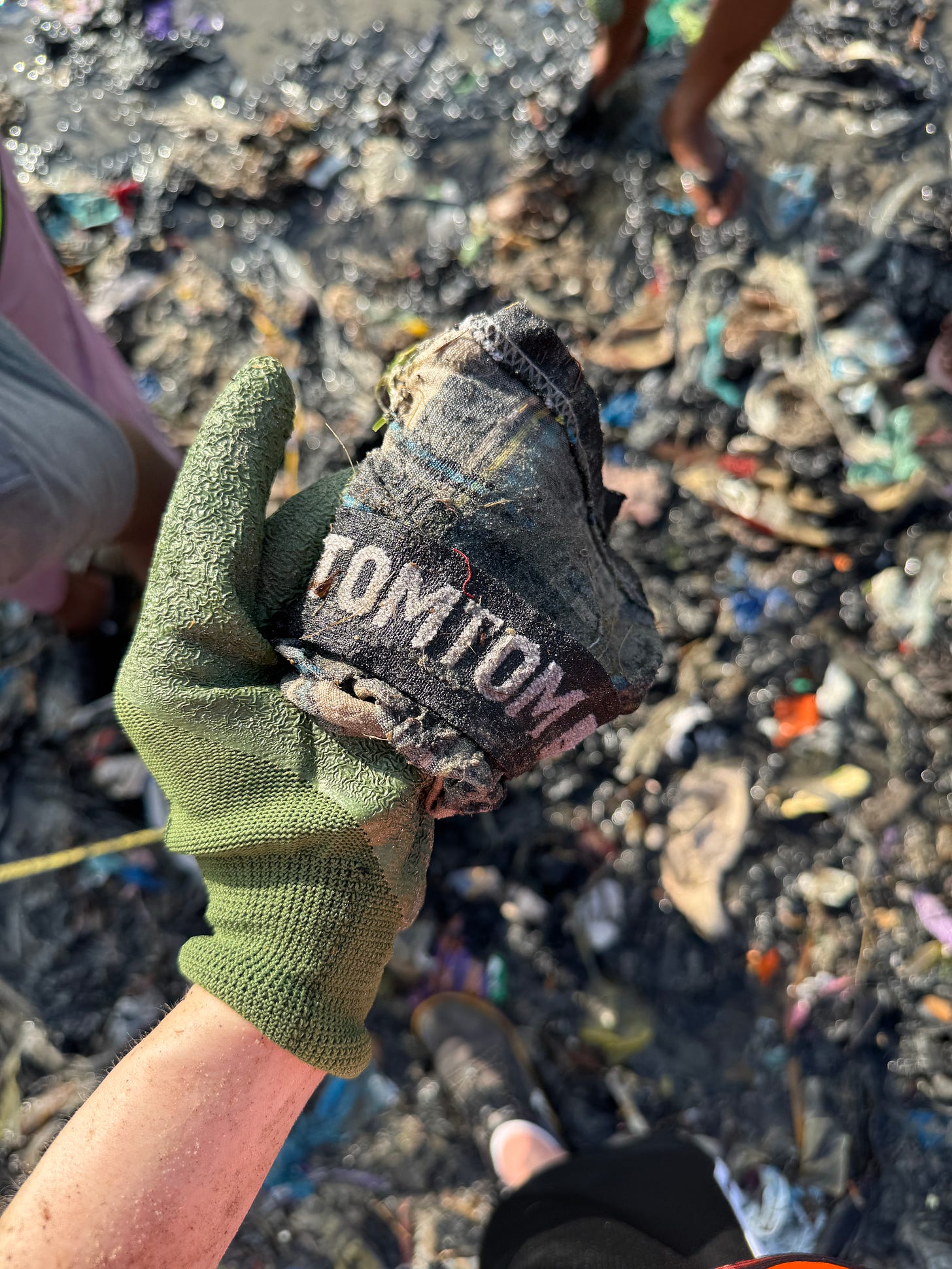
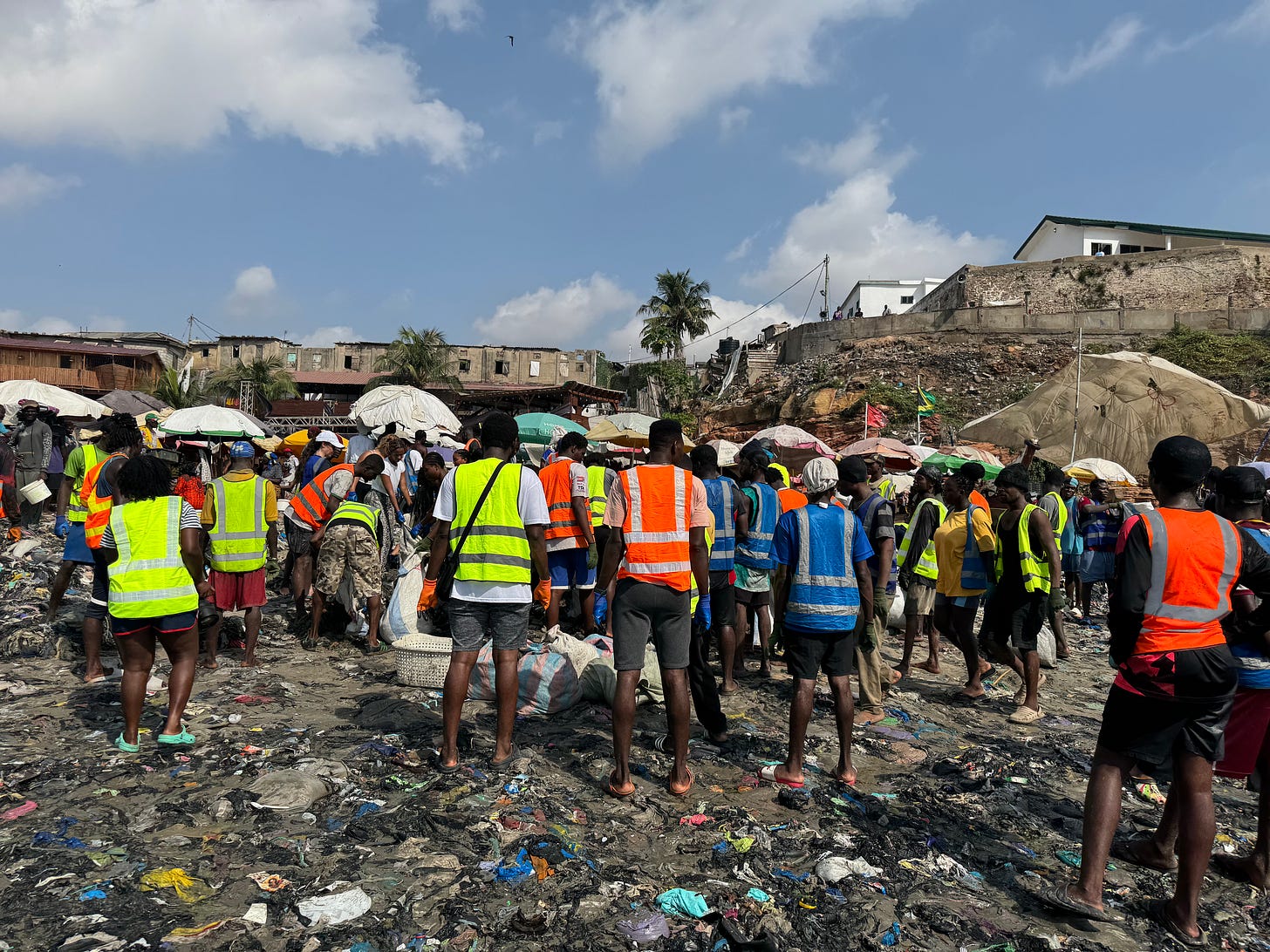
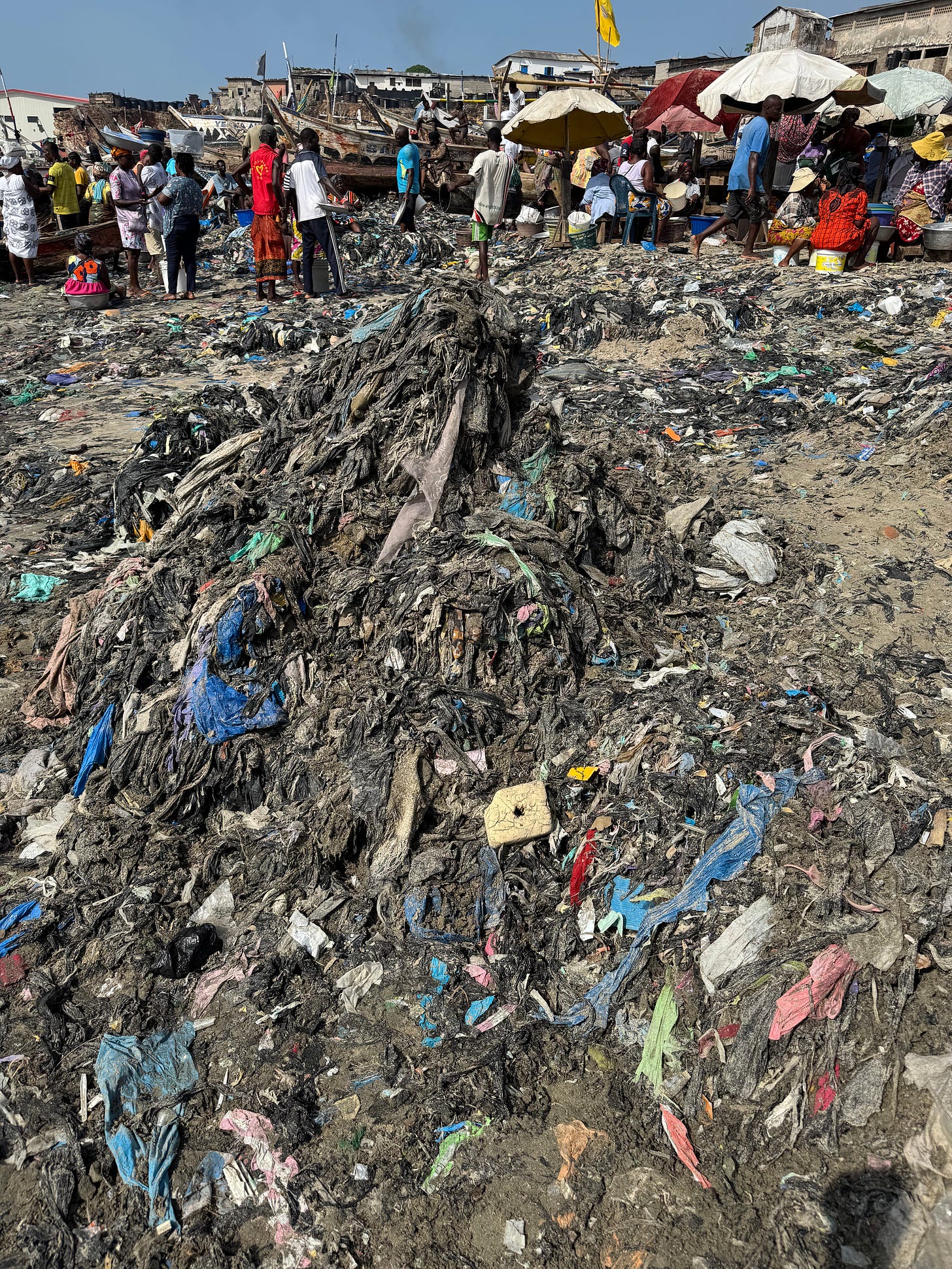
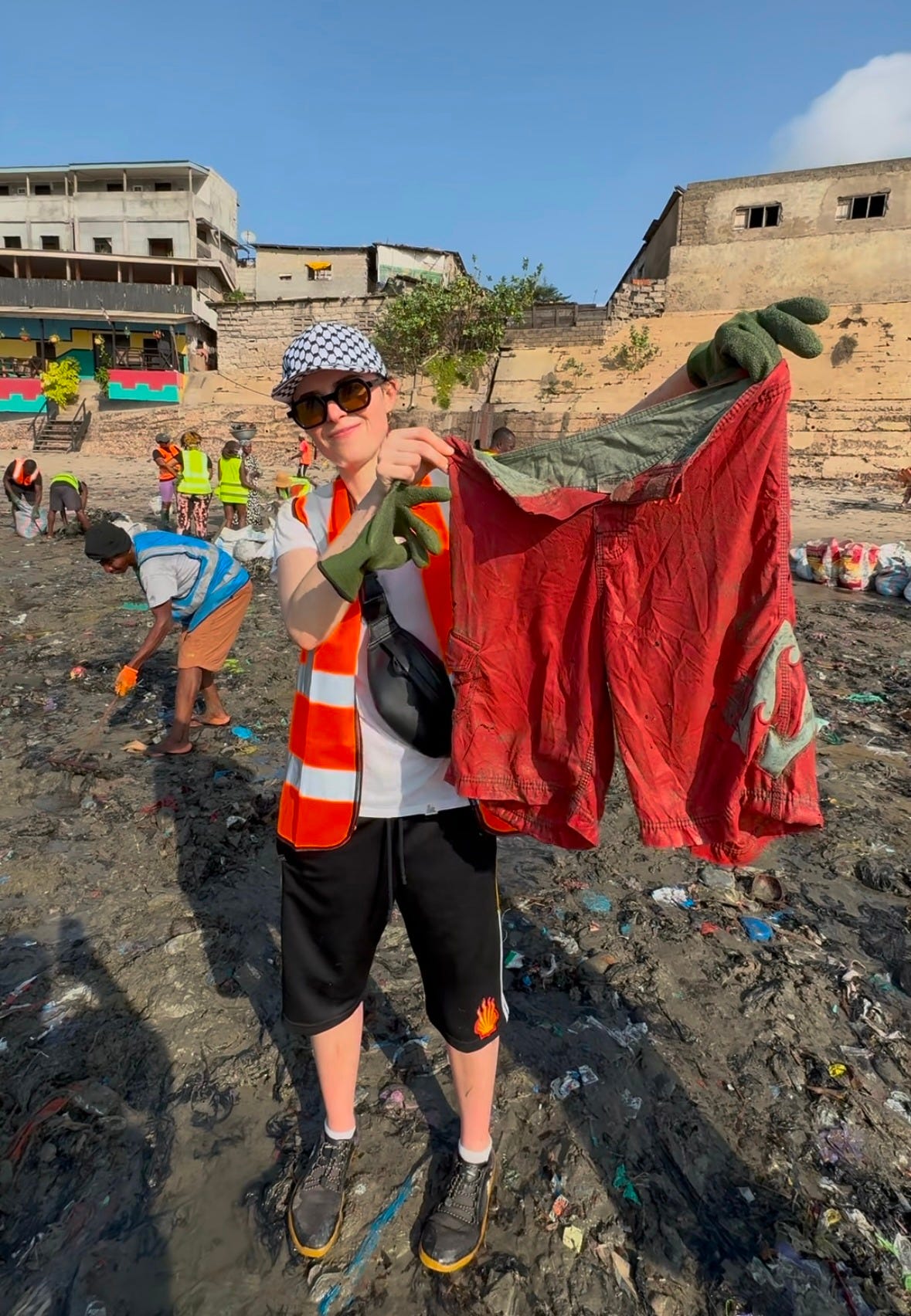
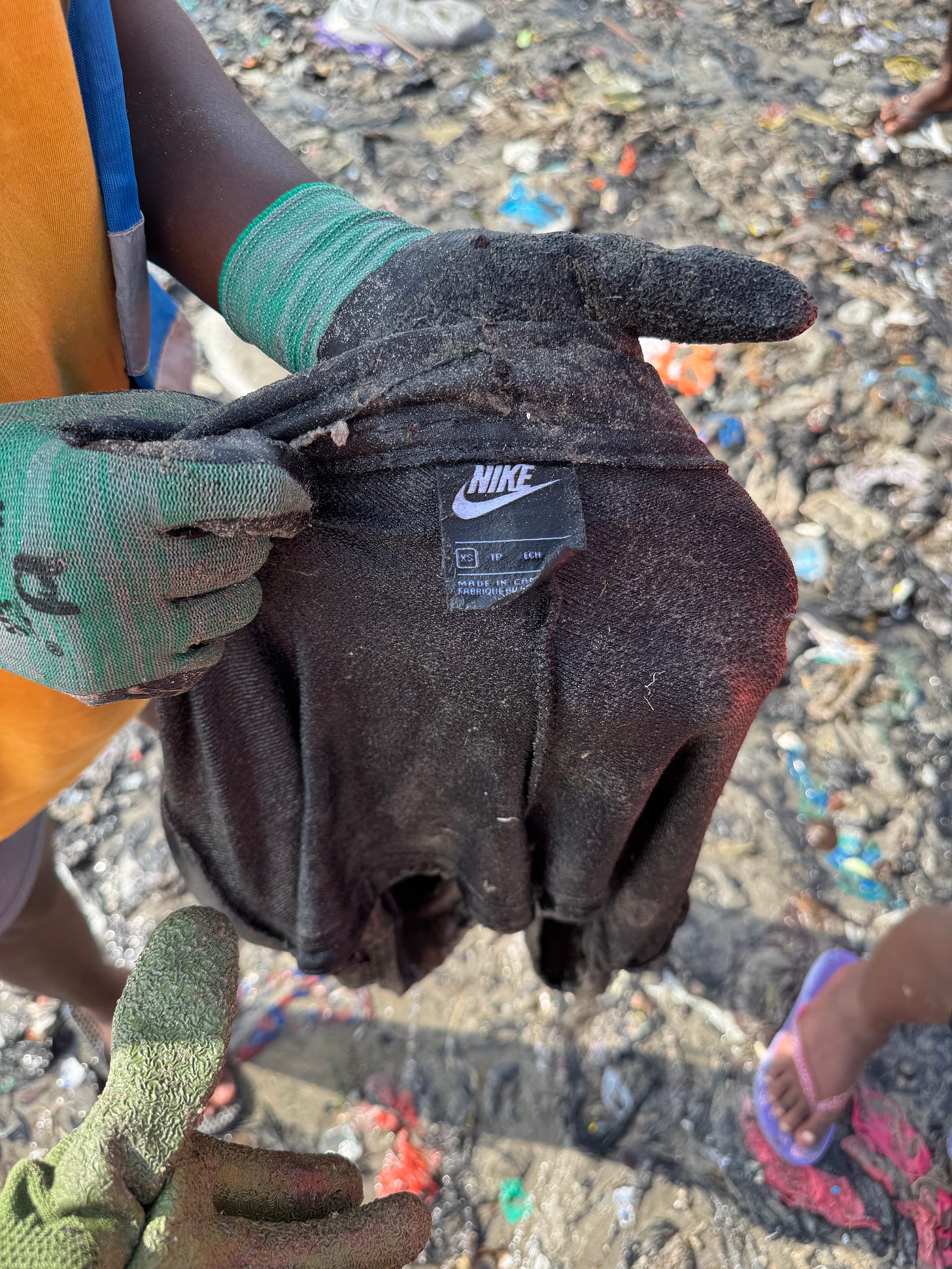
I have just come across your Substack and subscribed! Thank you for this article - enlightening and heartbreaking in equal measure. It reminded me of the quote ‘when you throw something away, there is no away’.
Really enjoyed this read. Thank you. I appreciate you stating you are throwing old underwear. I find myself so conflicted on the best way to handle unwanted clothing items that aren’t worth doing anything with. Every solution just brings along guilt. I need to just give myself the permission to trash since I otherwise do what I can to keep clothes out of the secondhand wasteland.